Introspective AI
A multi-year research project that explores opportunities and tensions for AI-mediated introspective practise.
A multi-year research project that explores opportunities and tensions for AI-mediated introspective practise.
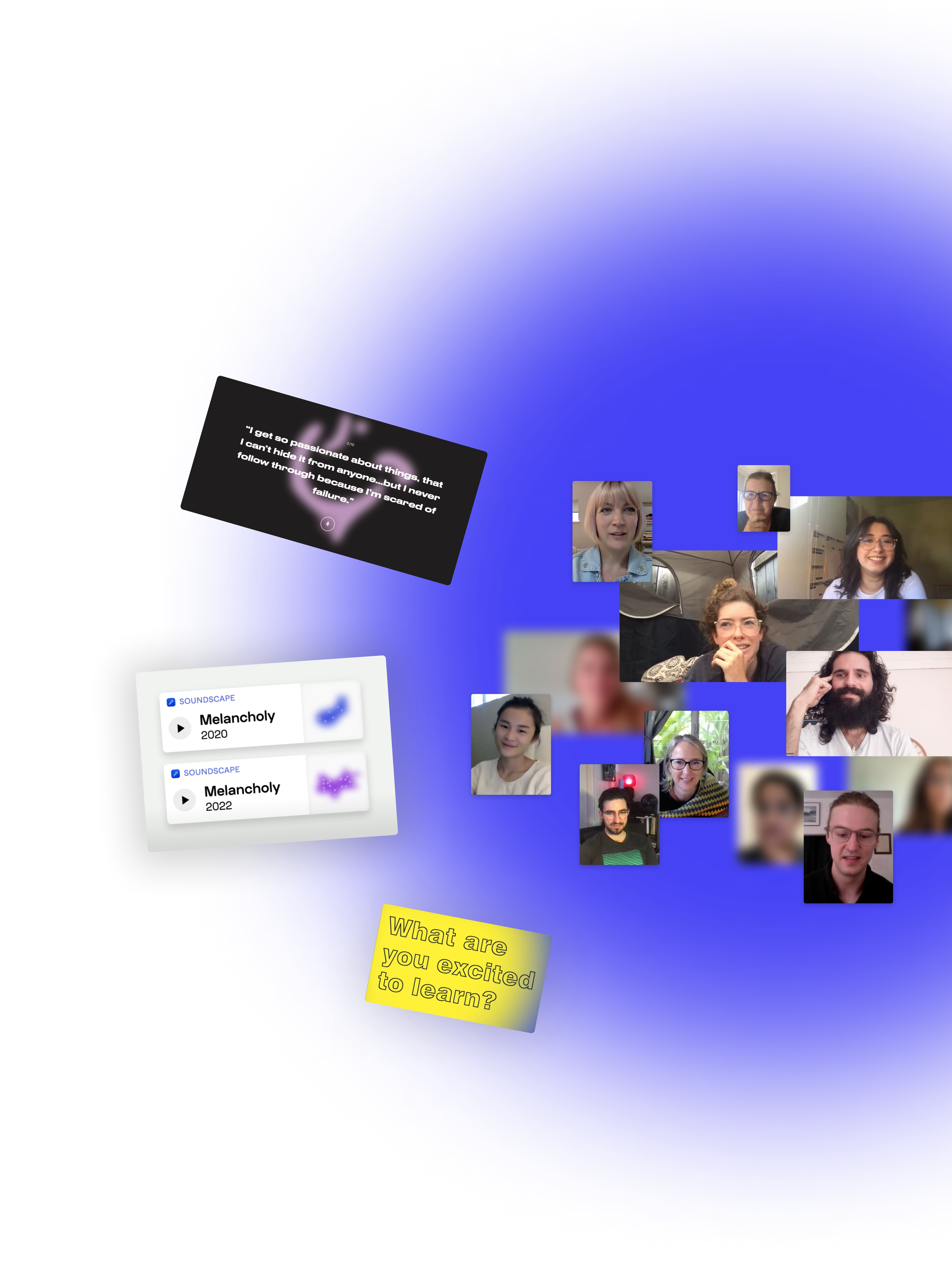
Introspection is the practice of looking inward and examining our thoughts, values, and emotions [2]. It requires us to reflect on our past experiences and contemplate questions about the future [13]. Our digital footprints can serve as reference points to our past realities, enabling us to actively contemplate them. Personal data plays an exciting role in this process as it captures our life experiences on an unprecedented scale. However, navigating through this vast amount of information can be challenging. Artificial intelligence (AI) presents promising possibilities to surface, explore, and identify patterns in our data records. However, in a space as personal and sensitive as self-development, it also raises several concerns.
In the first phase of this research project, I conducted several activities simultaneously to familiarize myself with introspective practice, machine learning, and personal data. Further, I engaged in early design concept generation, manifesting emergent insights, ideas, and thoughts across this experimental phase.
I have tried and tested various apps, methods, and services to understand better the full extent of technological intervention in this space. I have noted their unique features, assessed their impact on my practice, and used them to inspire future stages.
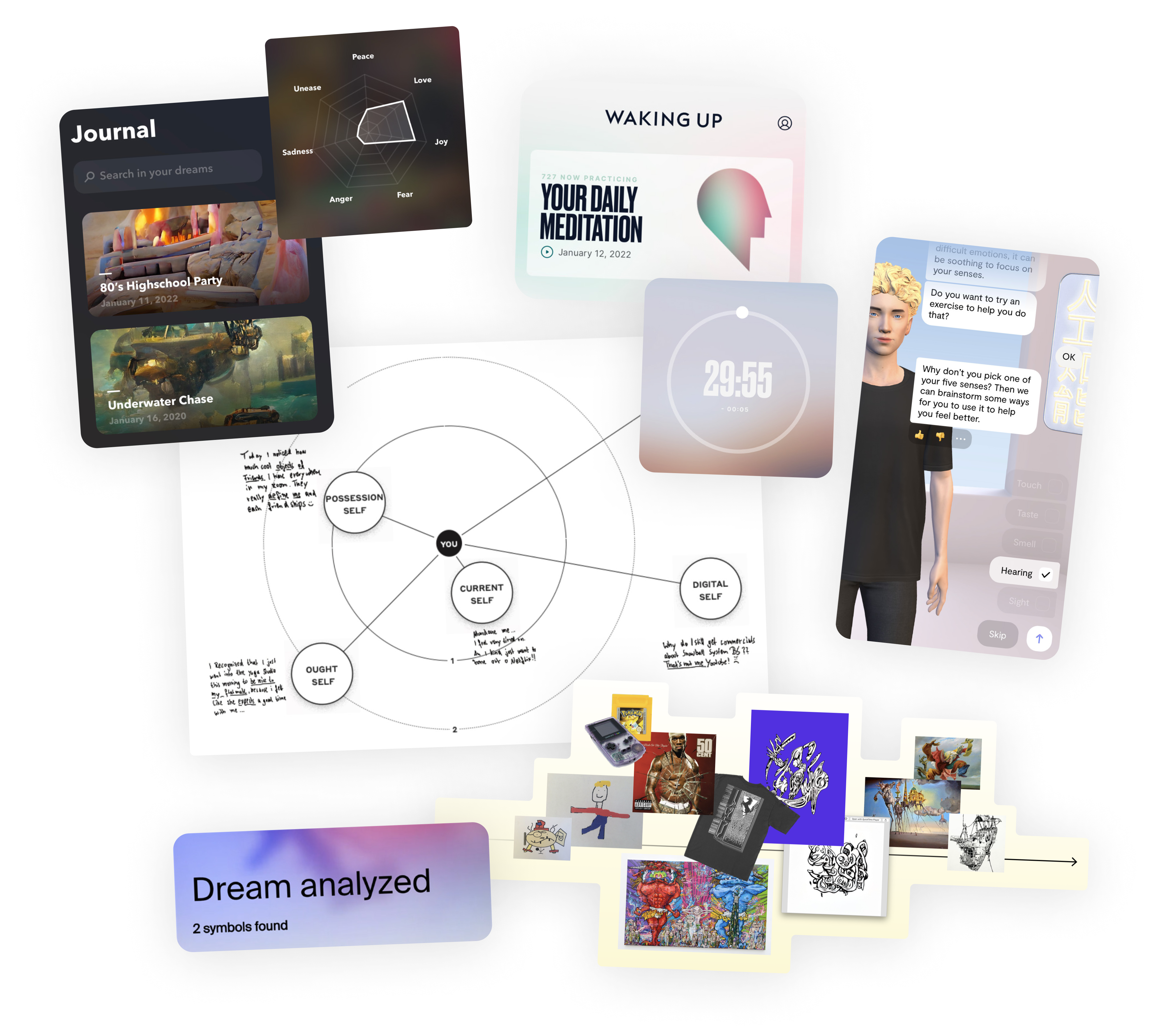
This is a short glimpse into some of the self-experiments I conducted where I integrated my data with machine learning tools to reflect on these experiences and consider how they might shape my practice of and orientation toward introspection.

As more and more insights from first-hand experiences emerged across the experimental phase, I documented them by sketching and annotating various design concepts.
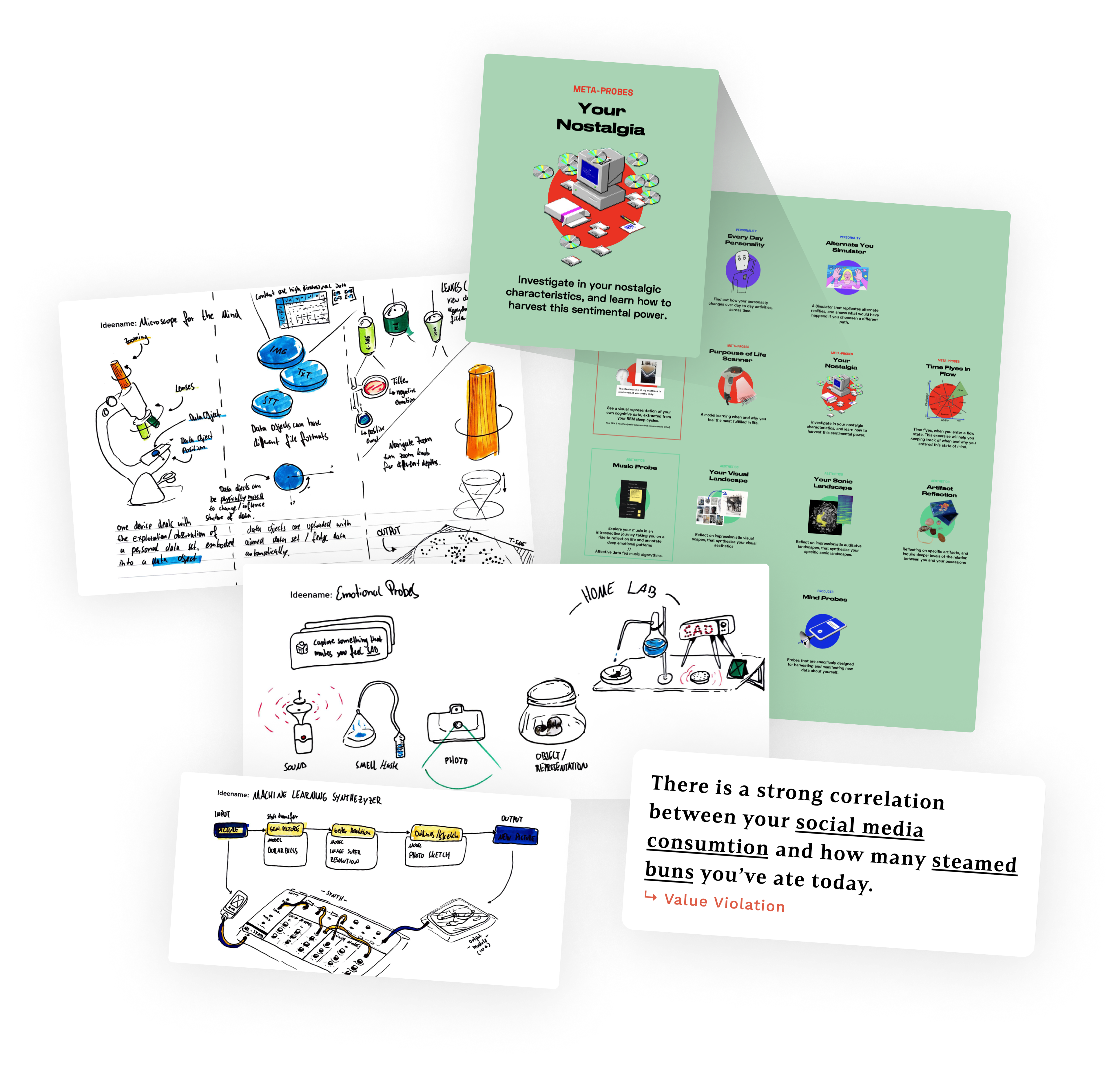
We framed Introspective AI as a context-aware agent mediating interactions between users and their
personal data. Our approach was to move away from the idea of AI as a single, all-knowing agent that
is infallible and takes on a human-like form [1,14].
We also speculated on future forms of personal data mining where deeper layers of data extraction
exist and reach into humans "affective, cognitive and physical worlds" [4].

After several rounds of developing, refining, and reflecting on Introspective AI design concepts, we arrived at seven distinct design proposals for Introspective AI products.
Everyday Personality presents a chatbot interface that delivers short and contextualized introspective prompts. This service uses its deep understanding of your behavioral data to intervene in everyday life with tailored prompts delivered at “opportune” moments.
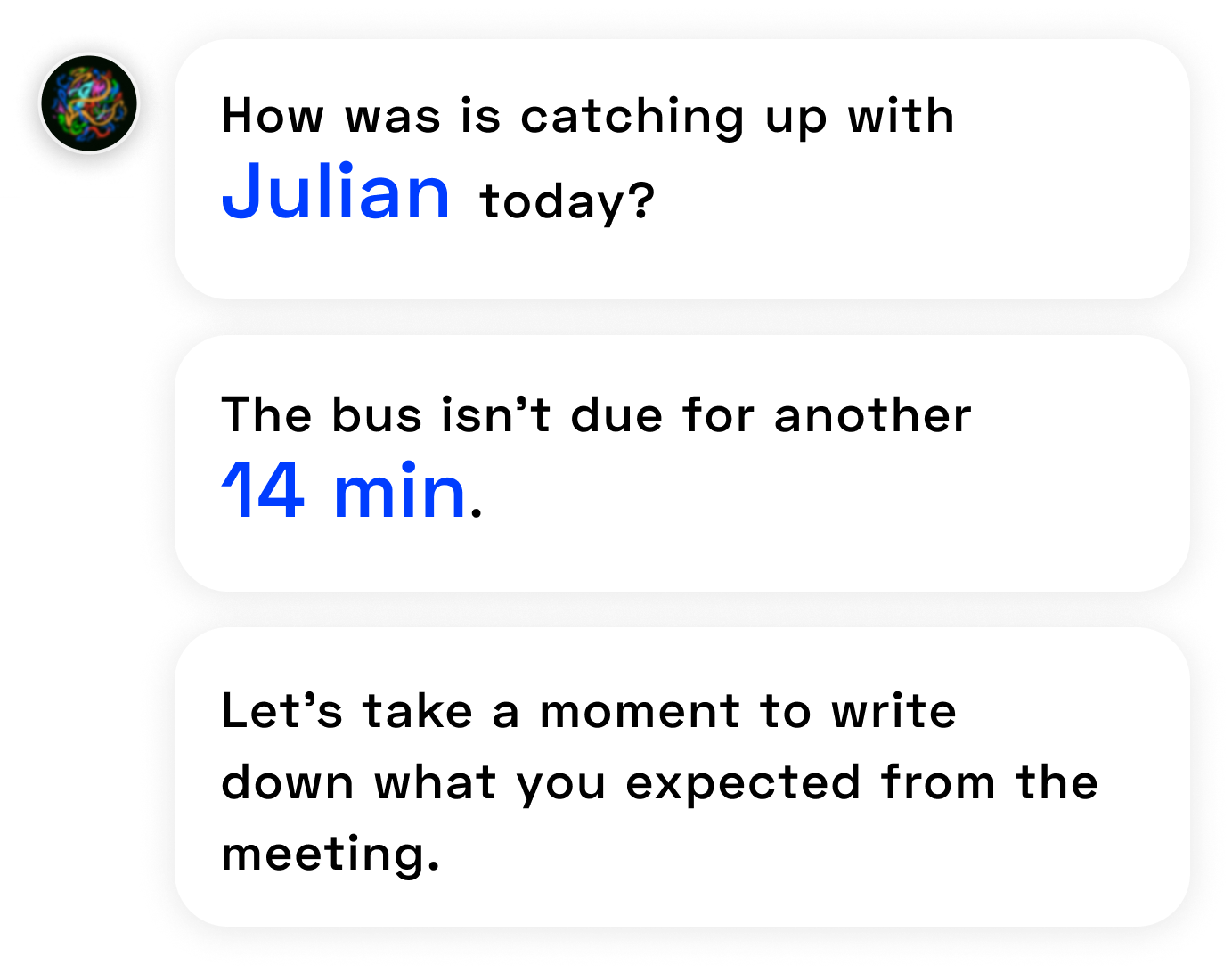
Music Reflection is a Spotify integration that generates introspective prompts based on personal data correlated with the music one is listening to.
Mind Probes is a smartphone app that uses external sensors for sound, color, smell, haptic, and vision to prompt users to collect sensory stimuli reflecting their social and emotional associations.

Vision Shrine is a device that visually tracks and updates a user's goals, dreams, and desires in real time. The device creates a data collage that represents the user's "ideal self" and can be interacted with through answering questions and resizing content.
Hello, Cyberself offers a conversational window into the assumptions (and biases) that a personal Introspective AI has developed over time. It leverages real-time voice cloning technology [3,8] to speak to you in your own voice. It expresses introspective prompts to you as you— embodying your personality traits and beliefs and then reveals the data ‘under the hood’ that generated these inferences.
Dreams offer a way for your subconscious mind to communicate with your conscious self. Dreaming offers an important window into phenomena that shape our innermost desires, fears, and goals [5,12]. Dream Streams combines a dreamcatcher-like device paired with mobile applications to offer windows into one’s subconscious and open new pathways to self-awareness.
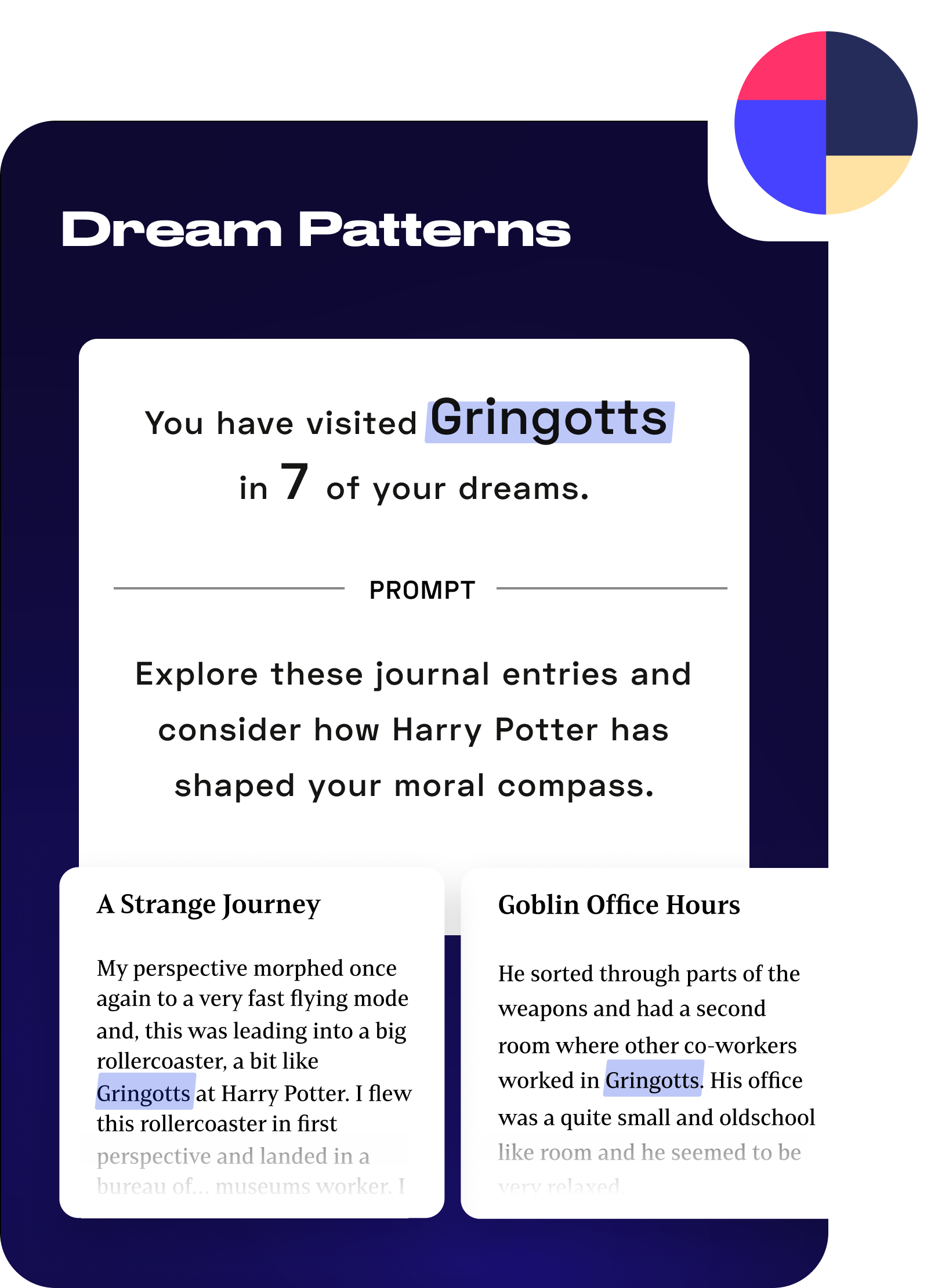
Deep Talk Report is an application that audits verbal and written conversations to find and classify deep exchanges. These analyzed accounts are curated guided introspective sessions and are also woven together to generate broader thematic reports as well as customised introspective activities.
We adopted a design fiction approach for this study and created a fictional company called Meta.Aware, to contextualize the various Introspective AI concepts in video sketches. We used this platform to conduct interviews with 17 participants, using the videos as prompts for discussion. Our Participants had a range of reactions related to perceived benefits and tensions in this emerging design space, and we report on the results as a guide for designing – or not designing – future AI tools within this space.
We recruited a diverse sample of people to elicit a wide range of discussions about and beyond our design proposals. This sample is not meant to be statistically representative but instead generative.
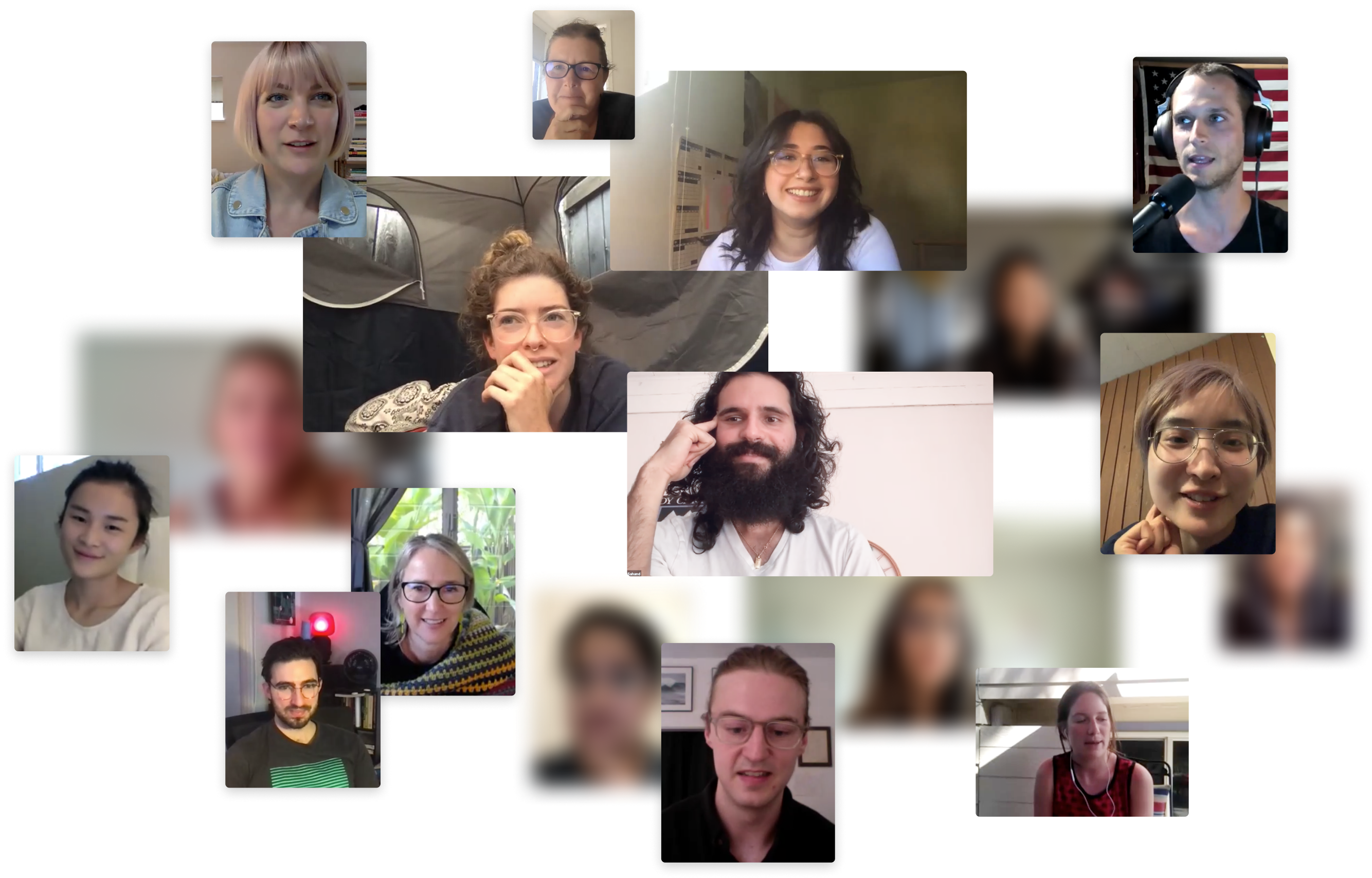
To help participants suspend disbelief, we designed the fictional company Meta.Aware and created an Introduction Video where the "CEO" explains the company's purpose. Participants could view this video on the Meta.Aware YouTube channel, along with each of the video proposals.

We interviewed all 17 Participants via Zoom sessions that lasted 2 to 3 hours.
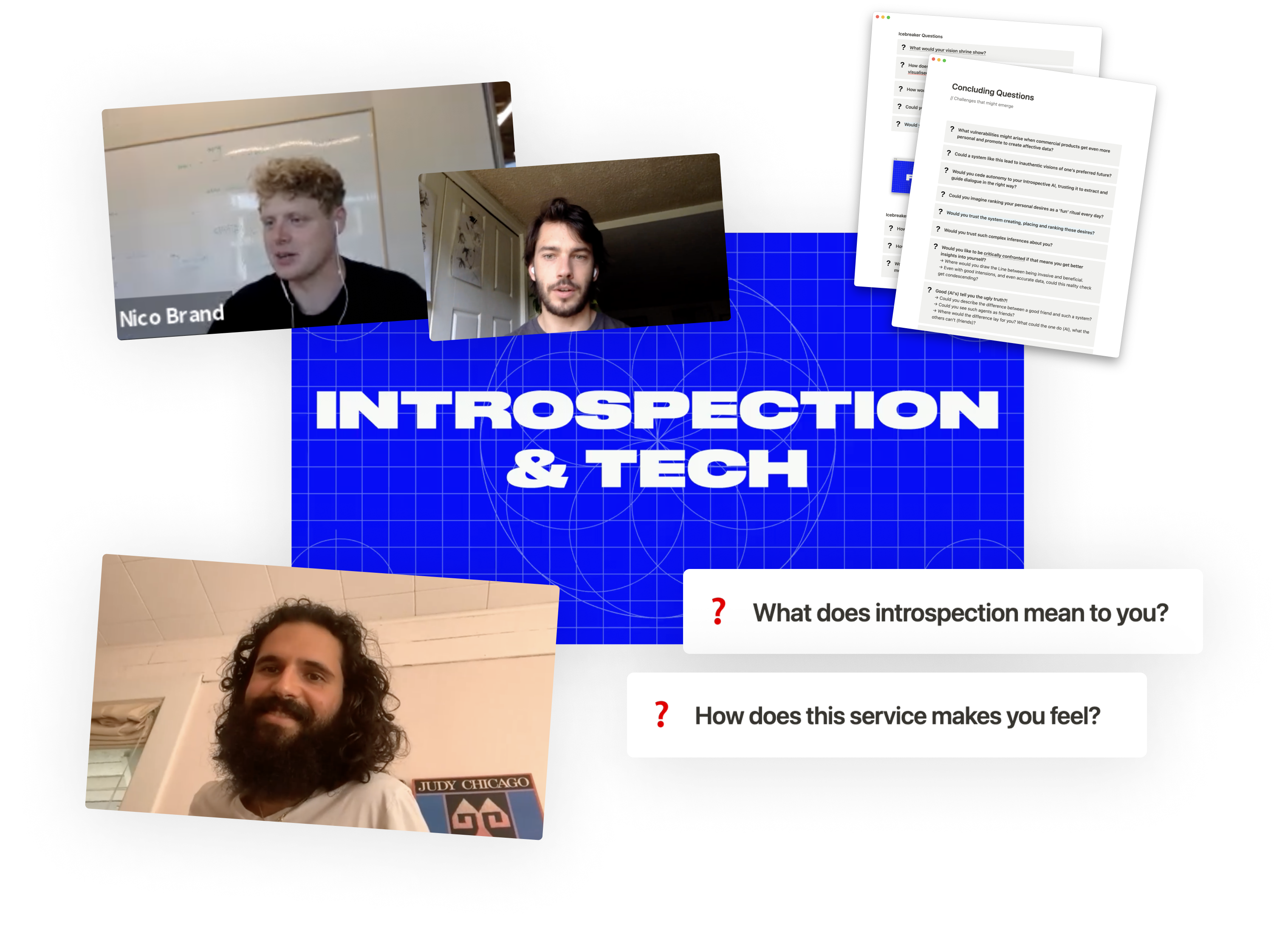
Participants had varying attitudes toward the potential role of AI services in their introspective practice. Our study showed that devising concepts with controversial design traits can improve understanding of the design space, boundaries, and social acceptabilities. Next, we summarize key findings and suggest opportunities for future HCI research and design.



CHI'23 Paper
Envisioning and Understanding Orientations to Introspective AI: Exploring a Design Space with Meta.Aware
, William Odom, and Samuel Barnett. 2023. Proceedings of SIGCHI Conference on Human Factors in Computing Systems. Hamburg, Germany, CHI’23. ACM Press.
Master's Thesis
A Design Inquiry into Introspective AI: Surfacing Opportunities, Issues, and Paradoxes
Spring 2022.
Design Pictorial
A Design Inquiry into Introspective AI: Surfacing Opportunities, Issues, and Paradoxes
, William Odom, and Samuel Barnett. 2021. In Proceedings of Designing Interactive Systems. Virtual Event. DIS ’21. ACM Press. 12 pages.
This research took place in the Greater Vancouver area in Canada on the unceded traditional
territories of the Coast Salish peoples of the Katzie, Kwantlen, Kwikwetlem (kwikwəƛ̓əm), Qayqayt,
Musqueam (xwməθkwəyəm), and numerous Stó:lō Nations.
This research is supported by the Natural
Sciences and Engineering Research Council of Canada (NSERC), the Social Sciences and Humanities
Research Council of Canada (SSHRC), and the Canada Foundation for Inno- vation (CFI).
We thank our participants for generously sharing their experiences with us and Aamir Ali, Chiara
Schmitt, Chiara Ferrari, Julian Goto, and Vanessa Montoya for their assistance on this project. We
also thank the
anonymous reviewers for their highly constructive feedback on both publications.
Team:
Leonard Weigand,
Vincent Fischer, Nico Brand
Consulting:
Benedikt Groß,
Michael Schuster
University: Simon Fraser University
, Fall 2019 → Fall 2022